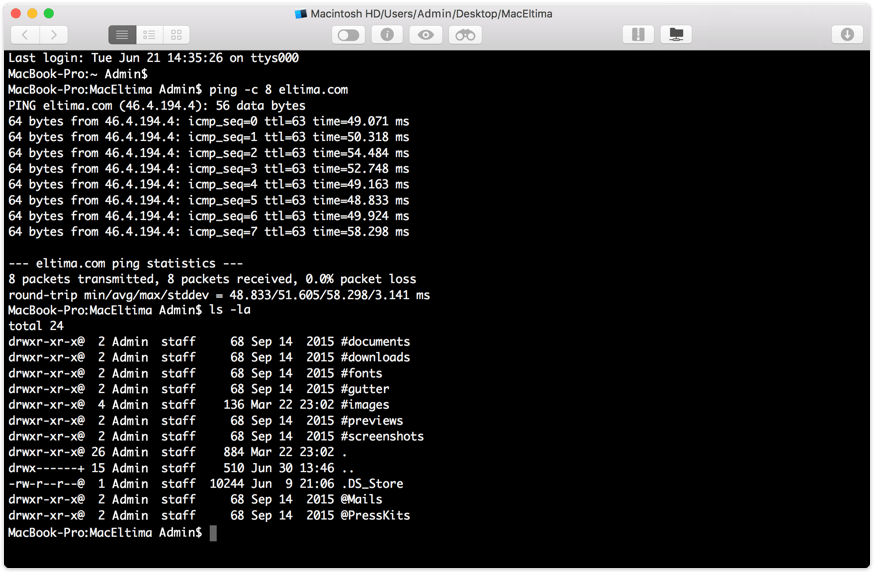

- #MAC TERMINAL COMMANDS TO SE SPECS SERIAL#
- #MAC TERMINAL COMMANDS TO SE SPECS UPGRADE#
- #MAC TERMINAL COMMANDS TO SE SPECS FREE#
- #MAC TERMINAL COMMANDS TO SE SPECS MAC#
By default, SSH operates on TCP port 22, but it can be changed if required. The client-server based model of SSH commands or PuTTY commands allows the authentication of two remotely located systems while encrypting the data that passes through them. After setting up the connection, the SSH client also ensures that the privacy and integrity of data are maintained throughout the network by using symmetric encryption, asymmetric encryption, and hashing algorithms. The SSH client uses public key cryptography to ensure a safe connection to the SSH server. The SSH Protocol follows a client-server model in which connection is established by SSH Client to the SSH server. This kind of connection can be used for file transfer and issuing other remote commands. This communication takes place through a secured encryption process.
#MAC TERMINAL COMMANDS TO SE SPECS FREE#
On top of this bar, a number will indicate how much free space you have on that drive.įor media drives, such as Blu-ray disc writers, you'll see a list of disc formats that the drive is capable of writing.The Secure Shell (SSH) Protocol lets a user connect to a remotely located computer from one computer. The storage tabs breaks down your usage by file type.įor hard drives and solid state drives, you'll see a colorful bar that breaks down storage usage by file type (music, movies, apps, photos and other). On the left side of the screen, you'll see a visual representation of your drives, and on the right side of the screen you'll see information about each drive. To find out what type of storage you have, click the Storage tab in the System Information window. You'll also be able to see information about your display, such as the type, resolution and pixel depth. Here, you'll be able to see more information about your graphics card, including how much dedicated memory (VRAM) it has. In the new window, under Hardware, click Graphics/Displays. Everything you ever wanted to know about your graphics card.

A new window will pop up with an overview of your Mac's installed hardware.

in the lower left corner of the System Information Overview screen.

If you want to find out more about your graphics card, click System Report. To find your graphics card, just look at the System Information Overview - it will list the type of graphics card you have under Graphics. Here, you will see how many memory slots your system has, how many are in use, and what size RAM stick is in each slot. Check out your RAM slots.įor more details on your memory, or RAM, click the Memory tab.
#MAC TERMINAL COMMANDS TO SE SPECS SERIAL#
The System Information window will show you an overview of your system, including what version of OS X you're running, your model, your processor, your installed memory (RAM), your graphics card and your serial number.
#MAC TERMINAL COMMANDS TO SE SPECS MAC#
From the drop-down menu, click About This Mac to open the System Information window. To find your Mac's basic specs, click the Apple icon in the top left corner of your screen.
#MAC TERMINAL COMMANDS TO SE SPECS UPGRADE#
Do you have a "Mid 2010" or "Early 2011" machine? What type of processor do you have? Is it even possible to upgrade your RAM?įortunately, finding your Mac's basic specs in OS X is very simple - here's how: Processor, memory and operating system It can be difficult to remember which MacBook model you own, given that Apple doesn't give them very distinct names.


 0 kommentar(er)
0 kommentar(er)
